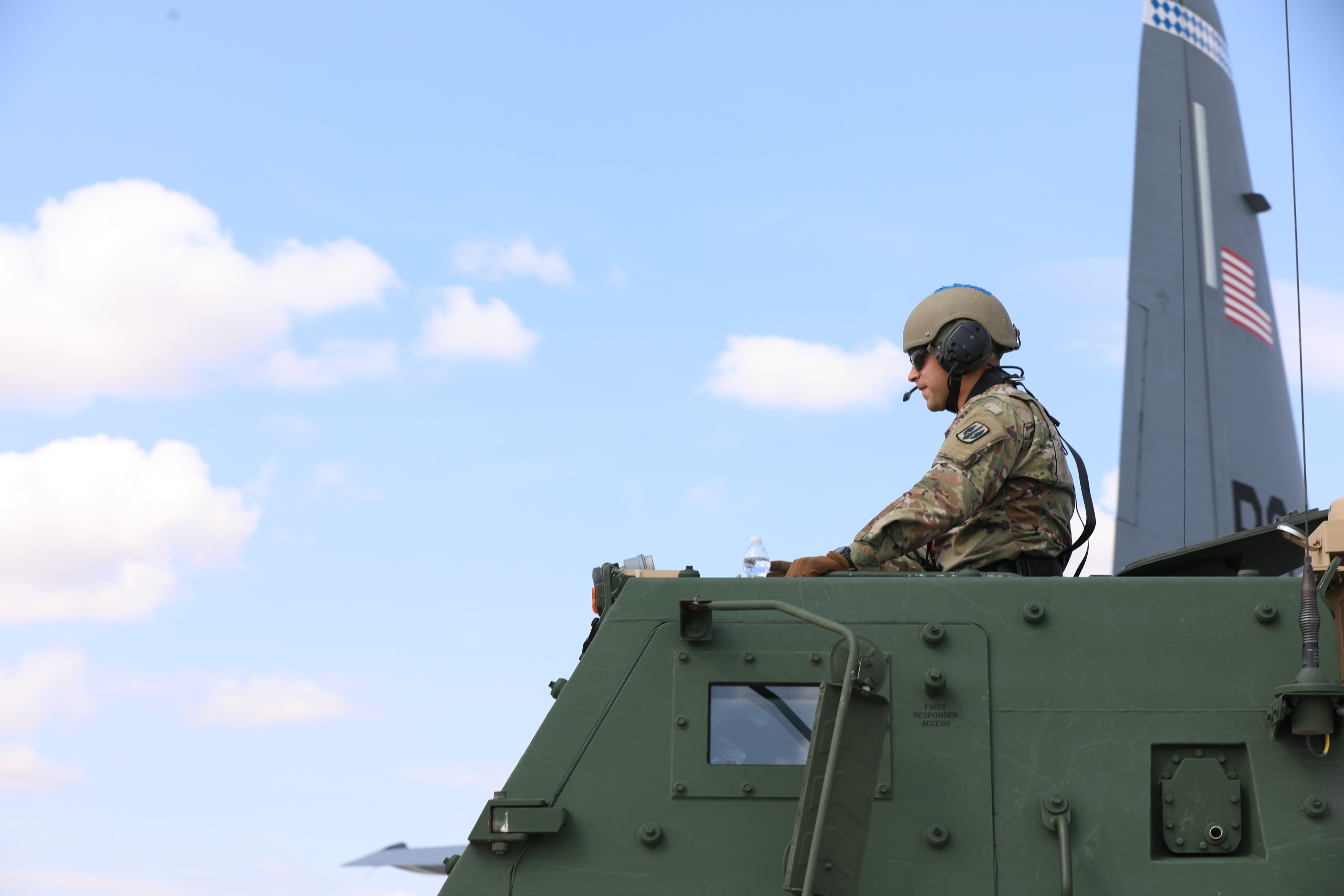WASHINGTON — As the Army develops new ways to strike an adversary at longer ranges and with more than just steel, two units in Europe are learning what that means on a continental scale.
On Oct. 11, staff with both the 56th Artillery Command and the 2nd Multi-Domain Task Force shared results from their recent fires exercise at the annual Association of the U.S. Army’s Meeting and Exposition that’s shaping how the Army will share data and targeting information with both joint forces and partner nations.
Col. Seth Knazovich, chief of staff for the 56th Artillery Command, told the audience that with new platforms, cyber, electromagnetic warfare and space-based capabilities, the command can better coordinate and synchronize fires, especially across deeper ranges.
That matters because forces in Europe are within reach of Russia’s arsenal, should the war in Ukraine escalate. And with more military activity in Eastern Europe overall, the distances that U.S. Army and partner forces must contend with have increased.
“Information sharing is a constant line of effort,” Knazovich said.
Taking the steps to continually share a common operational and intelligence picture to partner forces, as broadly as possible, is key to coordinating any kind of fires or targeting work, he said.
The Army reactivated the 56th Artillery Command in 2021, the same year it formed the 2nd MDTF. Both moves were to meet a growing need for longer-range fires coordination. That push followed the creation of the 1st MDTF in U.S. Indo-Pacific Command in 2018.
During the recent Arcane Thunder military exercise, the 2nd MDTF tested fires platforms such as artillery, missile launchers, Electronic warfare and cyber tools and communication equipment, passing targeting data from an Army unit in Germany to a contingent of soldiers with the 10th Mountain Division in Romania, then sharing firing data with U.S., French and Romanian firing units on the ground in Romania.
“That was the first opportunity to really show that the 2nd MDTF can share with all our coalition partners and get that firing data down to firing units that need it,” said Col. Patrick Moffett, 2nd MDTF commander.
Arcane Thunder ran from Aug. 28 to Sept. 8 and was the last exercise of fiscal year 2023 for the Army’s three MDTFs.
Both the 1st and 3rd MDTF are stationed in the Indo-Pacific. The 1st MDTF took part in the Joint Warfighting Assessment 23 in the Philippines this past spring while the 3rd MDTF received their assessment during Northern Edge, a military exercise in Alaska.
Each of the three task forces, all formed in recent years to embody the Multi-Domain Operations doctrine the service has adopted, regularly share lessons learned and best practices as these new formations play the lead role in future exercises and operations.

“The biggest difference is how the fight will happen,” Moffett said. “We’re in the European theater, we do not have to go to unpopulated areas like in the Pacific. We don’t have the same deployability requirements as first and third have. But overall capabilities and requirements will be the same with some niche changes.”
And the Army is spreading the knowledge.
Gen. Charles Flynn, head of U.S. Army Pacific, told Defense News that the 3rd MDTF in Hawaii will add five officers from the Australian military in the summer of 2024 to build a combined element of the task force.
Former Army Chief of Staff Gen. James McConville said earlier this year that a fourth MDTF might be created and deployed to the Pacific as well, Defense News reported.
The Europe-based Arcane Thunder exercise for 2nd MDTF included the 10 NATO corps commanders, Moffett said.
Some of the unexpected challenges that the 2nd MDTF encountered included finding the right kind of electrical power to run their systems.
“Not all NATO power generator capabilities are the same,” Moffett said.
Next steps for the task forces will involve more work with joint military services and an experimental evaluation during Project Convergence Capstone 4, early next year, according to an Army release.
Project Convergence is an all-services effort to connect battlefield sensors and shooters into a single framework that allows commanders, regardless of service, to see and strike any target with the most relevant fires platform.
Todd South has written about crime, courts, government and the military for multiple publications since 2004 and was named a 2014 Pulitzer finalist for a co-written project on witness intimidation. Todd is a Marine veteran of the Iraq War.





